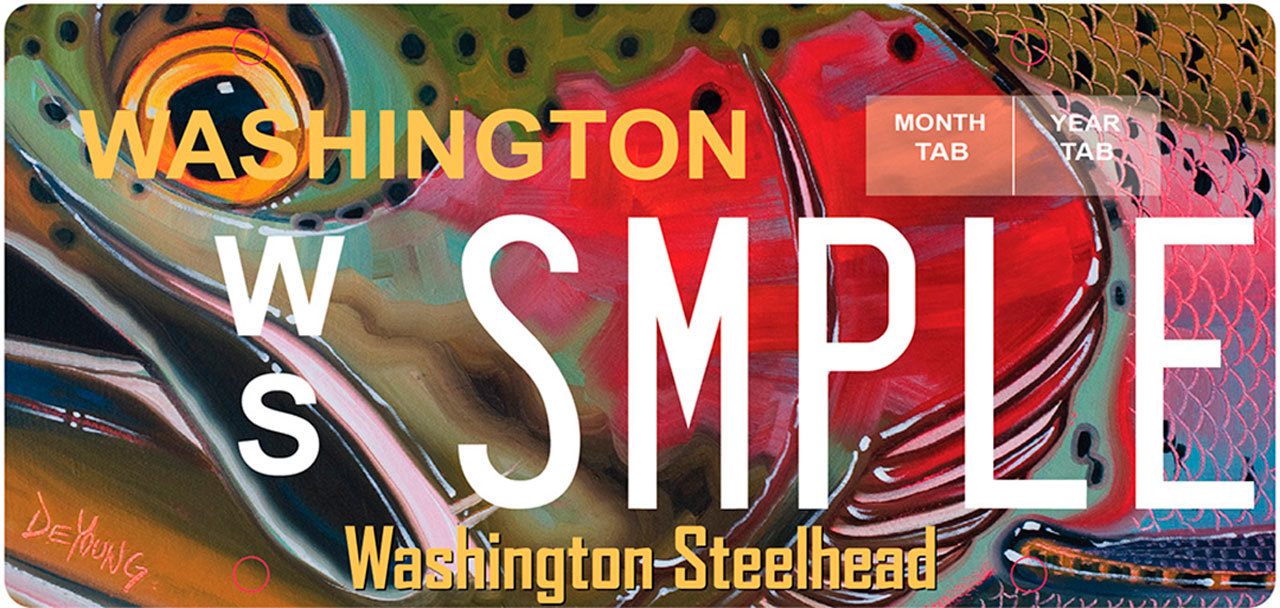Sport fishing for bottomfish closed off the Washington coast
Recreational bottomfishing in Willapa Bay and Grays Harbor, as well as Marine Areas 1-3 and 4, is closed until March 10.
The Pacific Fishery Management Council adopted changes to the recreational bottomfish seasons along the Washington coast as part of its groundfish biennial management cycle for 2017-18. The recreational bottomfish season is currently open year round in coastal marine areas, although rough ocean conditions in winter results in minimal fishing effort from mid-October through mid-March.
This new rule changes the coastal recreational bottomfish season from a year round season to one open from the second Saturday in March through the third Saturday in October. It also aligns the recreational bottomfish season with the recreational lingcod season in Marine Areas 1-3, including Marine Areas 2-1 (Willapa Bay) and 2-2 (Grays Harbor), and preserves recreational fishing opportunity in months when there has been significant participation in the fishery (March-October).
Marine Area 4B, east of the Bonnilla-Tatoosh line, will remain open year round as some recreational fishing does occur in this area during the winter. This rule change is necessary to conform to federal action taken by the National Marine Fisheries Service (NMFS).
The winter closure does not include surfperch when fishing from the beach, which will continue to be allowed year round.
Bottomfish includes Pacific cod, Pacific tomcod, Pacific hake (or whiting), walleye pollock, all species of dabs, sole and flounders (except Pacific halibut), lingcod, ratfish, sablefish, cabezon, greenling, buffalo sculpin, great sculpin, red Irish lord, brown Irish lord, Pacific staghorn sculpin, wolfeel, giant wrymouth, plainfin midshipman, all species of shark, skate, rockfish, rattail, and surfperches (all saltwater perch are surfperch) excluding shiner perch.
The coastal recreational bottomfish fishery will reopen on the second Saturday in March through the third Saturday in October (March 11 through Oct. 21, 2017).
Master Hunter Permit Program accepting applications now
The Washington Department of Fish and Wildlife will accept applications for its Master Hunter Permit Program through Feb. 15, 2017. The program is designed to promote safe, lawful and ethical hunting, and to strengthen Washington’s hunting heritage and conservation ethic.
Fish &Wildlife enlists master hunters for controlled hunts to remove problem animals that damage property. Master hunters also participate in volunteer projects involving increasing access to private lands, habitat enhancement, data collection, hunter education, and landowner relations.
“To qualify for the program, applicants must demonstrate a high level of skill and be committed to lawful and ethical hunting practices,” said David Whipple, Fish &Wildlife Hunter Education division manager.
Fish &Wildlife will be holding four orientation meetings that will focus on giving new information to current master hunters and educating prospective applicants on the Master Hunter Permit Program. The meetings are scheduled for:
• Feb. 4 – From 3:30 p.m. to 5:30 p.m. at the Inland Northwest Wildlife Council, 6116 N Market St, Spokane.
• Feb. 6 – From 5 p.m. to 7 p.m. at the Nile Shrine Center, 6601 244th St SW, Mountlake Terrace.
• Feb. 9 – From 7 p.m. to 9 p.m. at the Tacoma Sportsman’s Club, 16409 Canyon Rd E, Puyallup.
• Feb. 15 – From 7 p.m. to 9 p.m. at the Cowlitz Co. PUD building, 961 12th Ave, Longview.
Hunters enrolling in the program must pay a $50 application fee, pass a criminal background check, pass a written test, demonstrate shooting proficiency, provide at least 20 hours of approved volunteer service and meet other qualifications described on Fish &Wildlife’s website at http://wdfw.wa.gov/hunting/masterhunter/.
Whipple encourages individuals who enroll in the program to prepare thoroughly for the written test, because applicants are allowed only one chance to re-take the exam.
There are about 1,650 certified master hunters currently enrolled in the program, which is administered by WDFW’s Wildlife Program.
Approved volunteer work conducted during 2016 will be honored for individuals applying in 2017.
Steelhead license plate available for purchase
Steelhead enthusiasts can now show support for their favorite species by purchasing a vehicle license plate with an image of Washington’s iconic state fish.
The steelhead specialty plate went on sale today and revenue generated from plate sales will be used by the Washington Department Fish &Wildlife to help support activities critical to conserving populations of native steelhead.
More than 4,000 people expressed interest in buying a steelhead license plate last year when Fish &Wildlife collected the signatures required to seek legislative approval to offer a new specialty plate. The 2016 Legislature gave the OK to proceed with steelhead license plate sales.
In much of Washington, wild steelhead are listed for protection under the federal Endangered Species Act. Fish &Wildlife is currently taking several actions to restore those populations to sustainable levels, including measures that guide fisheries management, hatchery operations, monitoring and habitat-restoration programs.
The initial price of special wildlife-themed background plates ranges from $54 to $72 depending on the vehicle, in addition to the regular license fees. More information on how to purchase a steelhead license plate is available on the Washington Department of Licensing website at http://www.dol.wa.gov/vehicleregistration/specialdesign.html


